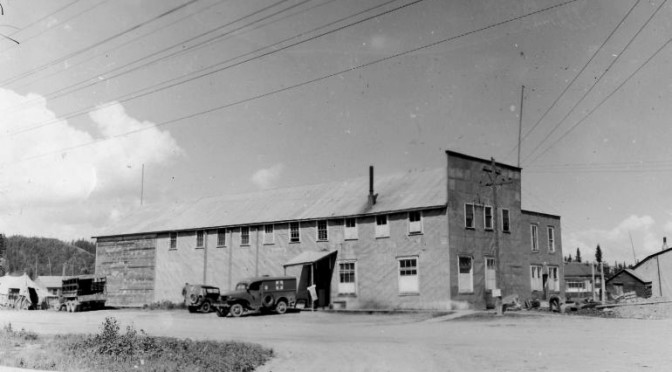
The 58th Medical Battalion supplied one platoon to the effort in Yukon Territory. Stationed at Whitehorse, they took care of troops, construction crews, First Nations and Canadians – whoever needed them. Medics stayed in the field following the road work, working out of aid stations housed in tents. By June, the 58th had set up more permanent dispensaries in fixed locations. Ten to fifteen bed units, these dispensaries received the more seriously afflicted patients from the field medics. That same month the battalion converted an old gymnasium in Whitehorse into a full blown Army Hospital that remained in operation until 1945.

All along the full length of the emerging Highway water supplies, garbage disposal and sewer systems were barely adequate. With the arrival of thousands of outsiders, that problem became critical. Under supervision of the 58th, construction crews built, expanded and repaired water and sewer facilities from Dawson Creek all the way to Alaska. Those facilities remained in service to the local population long after the Corps of Engineers and the 58th moved on. The Army inadvertently brought influenza, diphtheria, measles and cerebrospinal meningitis to the population of the Yukon Territory.

Soldiers and civilians from the outside had been vaccinated before they came in country. Now the 58th faced the unanticipated problem of vaccinating the local population. They did their best. Millie Jones of Carcross, 10 years old in 1942, remembers Army trucks taking them to a clinic to get their ‘shots’. The 58th provided what treatment they could for the sick. Unfortunately many natives, especially the First Nations, who had no natural immunities at all, sickened and died. To add to the problems of the 58th, hundreds of soldiers received a contaminated yellow fever vaccine prior to their arrival in Country and developed ‘yellow jaundice’.
